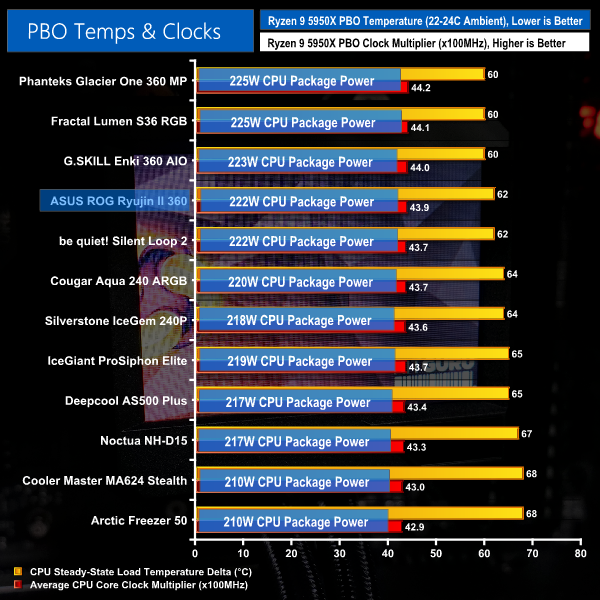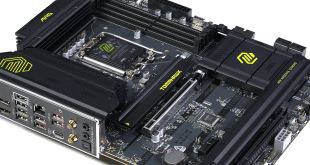We won’t put too much emphasis on PBO results, but we will spend some time to quickly analyse them using our full fan speed data.
With 90C the maximum target temperature for PBO, we are looking for the cooler that achieves the balance between lower temperature operation and higher PBO clock speeds. Higher clocks with lower temperatures are better. But one cooler may run at slightly higher temperatures than another, albeit with higher clock speeds, so look out for that.
In essence, this test is showing us how far the coolers can be pushed while keeping a sensible 90C maximum. Or whether there is more room for pushing clocks and power delivery beyond the PBO limits while still sticking to a 90C target.
Under PBO conditions, the ROG Ryujin II 360 still performs very well, but this time the G.SKILL 360mm AIO leapfrogs ASUS’ unit. Temperature and power cooled performance from the ROG cooler are equivalent to that of the be quiet! Silent Loop 2 240mm AIO in our testing. ASUS does, however, manage to extract slightly more frequency from the 16-core Ryzen chip.
The performance delta between ASUS’ cooler and that of the competing 360mm AIOs does, once again, look to be tied to the pump speed. Phanteks’ Asetek design AIO uses slightly faster fans (albeit the Noctua blowers on the ROG Ryujin II 360 are very high quality), but it uses a significantly higher speed pump.
 KitGuru KitGuru.net – Tech News | Hardware News | Hardware Reviews | IOS | Mobile | Gaming | Graphics Cards
KitGuru KitGuru.net – Tech News | Hardware News | Hardware Reviews | IOS | Mobile | Gaming | Graphics Cards



